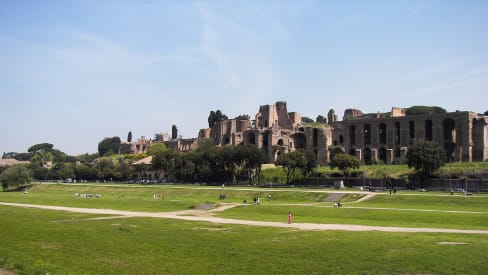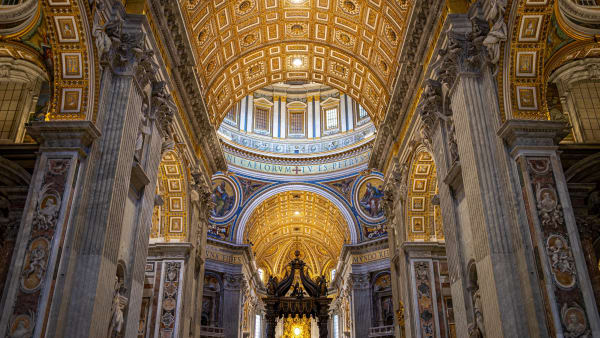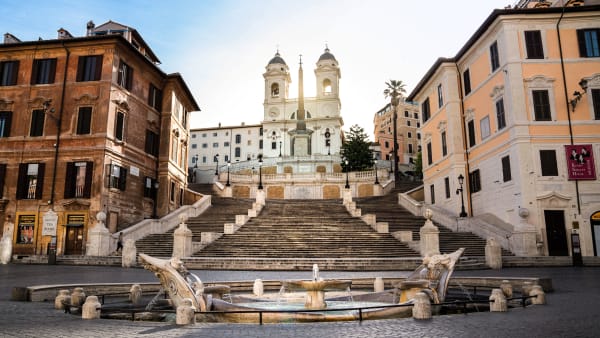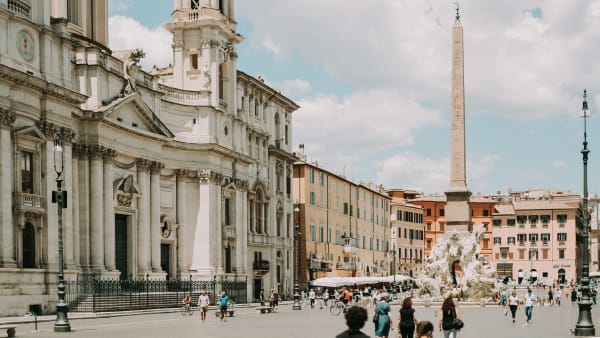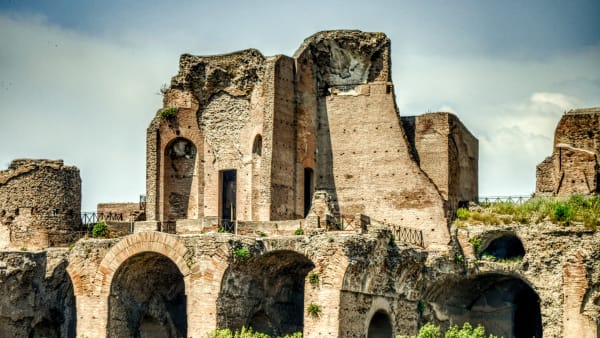Nearby places of interest
Nearby places of interest
As mentioned before, the Circus Maximus is surrounded by other places of interest. Here’s a list of attractions you could visit while you’re in the area.
House of Augustus
The House of Augustus, or the Domus Augusti, is located on Palatine Hill. It was the main residence of the first emperor of Rome, Caesar Augustus.
On a tour, you can visit, among other things, the private studio of Augustus and admire beautiful (well-maintained) frescoes that are over 2,000 years old.
It’s located on the southwest slope of Palatine Hill, 120 m from the Circus Maximus (a 2-minute walk).
Roman Forum
This was the epicenter of social, political, religious, and cultural life in ancient Rome. It was also the heart of the empire and the ruins found here are surprisingly interesting.
No trip to the Eternal City would be complete without a visit to this majestic complex. It’s a must-see site and access is included in the Colosseum entry ticket .
The entrance to the Roman Forum is 900 m north of the Circus Maximus (an 11-minute walk).
Arch of Constantine
Among the three arches of triumph that still exist in Rome, this is the best-preserved one. The striking monument was built in the early fourth century to commemorate the victory of Constantine I at the Battle of Milvian Bridge in 312 AD.
It’s the last great monument of Imperial Rome and was inaugurated on the 10th anniversary of Constantine’s reign. It’s an imposing 21 meters high and 25.6 m wide and stood on Rome’s triumphal route.
The Arch of Constantine is located 900 m northeast of Circus Maximus (an 11-minute walk).
Palatine Hill
The Palatine is one of the seven hills of Rome and the first that was inhabited. Since the imperial period, it was the hill where the emperors built their palaces.
Here you can visit, among others, the remains of the residences of the House of Augustus, the Domus Tiberiana, the House of Livia, the Domus Aurea, the Farnesian Gardens, the Domus Transitoria, and the Hut of Romulus.
The entrance of the Palatine is located approximately 500 m from the Circus Maximus (a 6-minute walk).
Palace of Domitian
It’s the largest building on Palatine Hill and served as the official residence of Roman emperors for 300 years. It was completed in 92 AD and consisted of three parts: the Domus Flavia (public wing), Domus Augustana (residential wing), and the stadium.
The palace of Emperor Titus Flavius Domitianus used to be extravagantly decorated with columns, frescoes, friezes, fountains, and exotic marbles. Today, it’s one of the best-preserved ruins on Palatine Hill.
It’s about 1 km away from the Circus Maximus (a 15-minute walk).
Imperial Fora
The Fori Imperiali consists of a series of monumental fora (public squares). These were built over a total period of 150 years, between 46 BC and 113 AD. Over the years, Caesar, Vespasian, Augustus, Nerva, and Trajan contributed to its development.
The Imperial Fora was built to replace the Roman Forum after it became too small due to strong population growth and could no longer fulfill its purpose as the center of Rome.
The entrance of the Imperial Fora is approximately 1 km northeast of the Circus Maximus (a 15-minute walk).
Ludus Magnus
The Ludus Magnus was the largest of the four ludi (gladiatorial schools) known from ancient Rome. The rectangular building complex was commissioned by Emperor Domitian (81-96) and completed by Hadrian (117-138).
The building was located in the valley between the Caelius and the Esquiline, east of the Colosseum—to which it was connected by a subterranean passage.
The Ludus Magnus is located 1.3 km northeast of the Circus Maximus (a 16-minute walk).
Domus Aurea
The remains of the great palace that Emperor Nero ordered to be built in 64 AD can be visited in a virtual reality experience tour .
The VR glasses allow you to explore Nero’s extravagant residence in all its glory and get an idea of what it would have looked like at the time.
The entrance to the Domus Area is 1.6 km northeast of the Circus Maximus (a 20-minute walk).
Basilica of San Clemente
This intriguing building complex is a Roman Catholic church dedicated to Pope Clement I. The first tier was built in the fourth century, making it one of the oldest Christian churches in Rome.
Over the centuries, three successive floors have been built over it, of which the top three can be visited. During a visit, you can admire (among other things) the underground temple of the Persian sun-god Mithras and numerous medieval frescoes.
The Basilica of San Clemente is located 1.5 km from the Circus Maximus (a 19-minute walk).


